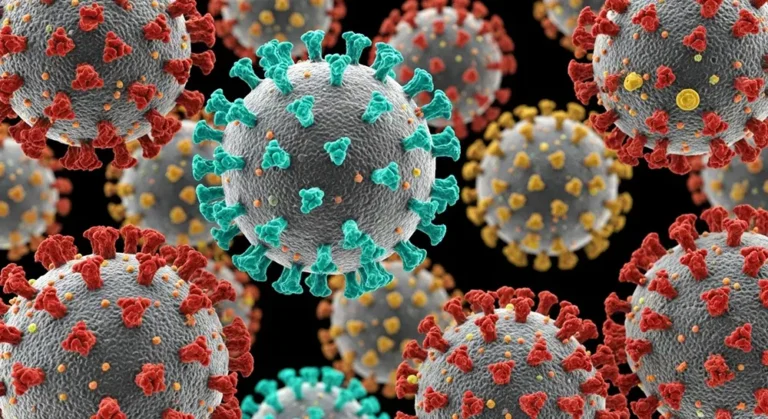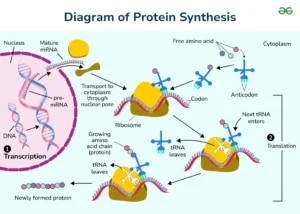How Do mRNA Vaccines Work? They’ve Just Got Even Better
How a tiny instruction molecule and a microscopic bubble of fat changed medicine forever.

Key Findings
- The big change with mRNA is that vaccine design is now based on digital information (the genetic code), not on growing the actual virus.
- mRNA vaccines wouldn't work without the separate invention of tiny fat bubbles (LNPs) that safely deliver the instructions into our cells.
- Because only the mRNA code needs to change, this technology allows scientists to create and update vaccines incredibly quickly.
- This mRNA instruction method isn't just for vaccines; it's becoming a whole new way to create treatments for diseases like cancer and genetic conditions.
Primary Source
Source: Recent Advances in the Lipid Nanoparticle-Mediated Delivery of mRNA Vaccines
Author(s): The U.S. National Institutes of Health (NIH)
During the COVID-19 pandemic, the term “mRNA vaccine” went from an obscure scientific concept to a household name almost overnight. We heard that it was a new kind of technology. We were told it was developed in record time. But for many of us, a fundamental question remained. How does it actually work? How can a vaccine teach our bodies to fight a disease without containing any part of the virus itself? It sounds a bit like magic. But it is just incredibly clever science.
The answer is surprisingly simple. Instead of injecting a weakened or dead virus, an mRNA vaccine gives our body a recipe. It is a set of instructions that our own cells use to build just one harmless piece of the virus. This piece, called an antigen, is like the virus’s uniform. Our immune system sees this uniform, learns to recognize it as an enemy, and builds a powerful defense force. So when the real virus shows up wearing the same uniform, our body is already prepared to defeat it.
How Did We Make Vaccines Before This?
To understand why mRNA is such a revolution, we first need to look back. For over two centuries, every vaccine worked on the same basic principle. Scientists had to grow huge amounts of a virus or bacteria in a lab. This was often a slow and difficult process.1Vaccine History: Developments by Year – Children’s Hospital of Philadelphia, accessed October 17, 2025, https://www.chop.edu/vaccine-education-center/science-history/vaccine-history/developments-by-year They would then weaken (attenuate) or kill (inactivate) the pathogen before putting it into a vaccine. This old method gave us amazing tools to fight diseases like polio and measles. But it was always tied to the slow pace of biology.
Every new vaccine required a completely new, custom-built process. It could take a decade or more to get from the initial discovery to a shot in someone’s arm.2The history of vaccines and how they’re developed – OSF HealthCare, accessed October 17, 2025, https://www.osfhealthcare.org/blog/the-history-of-vaccines-and-how-theyre-developed/ This lengthy timeline was a serious problem when facing a fast-moving global pandemic.
| Era | Key Figure/Event | Core Technology | Major Limitation |
|---|---|---|---|
| 1796 | Edward Jenner | Used the cowpox virus to protect against smallpox.3Different types of COVID-19 vaccines: How they work – Mayo Clinic, accessed October 17, 2025, https://www.mayoclinic.org/diseases-conditions/coronavirus/in-depth/different-types-of-covid-19-vaccines/art-20506465 | Relied on finding a naturally occurring, safer virus. |
| 1880s | Louis Pasteur | Weakened (attenuated) live pathogens in a lab.4en.wikipedia.org, accessed October 17, 2025, https://en.wikipedia.org/wiki/Lipid-based_nanoparticle | Required growing the actual dangerous pathogen.5How lipid nanoparticles safely deliver mRNA to human cells | Evonik – YouTube, accessed October 17, 2025, https://www.youtube.com/watch?v=FvsKvcB5RPE |
| 20th Century | Jonas Salk / MMR Vaccine | Large-scale biological manufacturing to grow and inactivate viruses.6Vaccines: Past, Present, and Future – NCBI – National Institutes of Health (NIH) |, accessed October 17, 2025, https://www.ncbi.nlm.nih.gov/books/NBK216821/ | Extremely slow; a new process was needed for each vaccine.7The history of vaccines and how they’re developed – OSF HealthCare, accessed October 17, 2025, https://www.osfhealthcare.org/blog/the-history-of-vaccines-and-how-theyre-developed/ |
| 2020 | mRNA Vaccines | Gave cells genetic instructions (mRNA) to build the antigen.8What are mRNA vaccines and how do they work?: MedlinePlus Genetics, accessed October 17, 2025, https://medlineplus.gov/genetics/understanding/therapy/mrnavaccines/ | Required a brand new delivery system to work.9World-changing mRNA vaccines | Penn Medicine, accessed October 17, 2025, https://www.pennmedicine.org/about/pioneering-the-future-of-medicine/mrna |
What Are the Instructions Made Of?
The “m” in mRNA stands for messenger. Messenger RNA is a natural molecule in every living thing, including you. Think of your DNA as a giant, precious library of master blueprints stored safely in the cell’s nucleus. To build anything, the cell makes a temporary, disposable copy of one blueprint. That copy is messenger RNA. The mRNA travels out of the nucleus to the cell’s factories, called ribosomes. The ribosomes read the mRNA instructions and build the specific protein the blueprint describes.10mRNA Vaccines: What They Are & How They Work – Cleveland Clinic, accessed October 17, 2025, https://my.clevelandclinic.org/health/treatments/21898-mrna-vaccines The vaccine simply hijacks this natural system.

Scientists identify the gene for a key part of the virus, like the spike protein of SARS-CoV-2. They then create a synthetic mRNA molecule with the instructions for only that spike protein. The mRNA in the vaccine never enters the cell’s nucleus. So it cannot touch or change your DNA in any way. It’s a one-way message that is quickly erased. After a few days, the cell naturally breaks down and disposes of the mRNA instructions.11What are mRNA vaccines and how do they work?: MedlinePlus Genetics, accessed October 17, 2025, https://medlineplus.gov/genetics/understanding/therapy/mrnavaccines/
How Is the Message Delivered Safely?
There was a big problem to solve before this technology could work. Our bodies are filled with enzymes that destroy stray RNA very quickly. This is a good defense against viruses. But it also meant that just injecting “naked” mRNA into the body would be useless. The instructions would be destroyed before they could be delivered. The mRNA molecule also can’t get inside a cell on its own.12Recent Advances in the Lipid Nanoparticle-Mediated Delivery of…, accessed October 17, 2025, https://pmc.ncbi.nlm.nih.gov/articles/PMC10059764/ So scientists needed to invent a delivery vehicle.
The solution is a tiny, fatty bubble called a Lipid Nanoparticle, or LNP. This microscopic sphere is the unsung hero of the mRNA revolution. It is made of four types of lipid (fat) molecules. Each has a specific job. Some lipids bind to the mRNA to protect it. Others form the main structure of the bubble. One special type of lipid creates a “stealth coating” that helps the LNP circulate in the body without being immediately destroyed by the immune system.13How lipid nanoparticles safely deliver mRNA to human cells | Evonik – YouTube, accessed October 17, 2025, https://www.youtube.com/watch?v=FvsKvcB5RPE This LNP acts like a perfect delivery package. It protects its precious cargo and helps it merge with our cells to release the mRNA instructions inside.
How Does the Body Learn to Fight the Virus?
Once the cell starts producing the harmless spike proteins, the final step begins. The cell displays these proteins on its surface. Specialized immune cells immediately recognize that this protein is foreign. It is an invader. This recognition kicks off a powerful, coordinated immune response. One part of this response involves B-cells, which start producing antibodies. These antibodies are like custom-made heat-seeking missiles designed to lock onto the spike protein.14What are mRNA vaccines and how do they work? – UK Health…, accessed October 17, 2025, https://ukhsa.blog.gov.uk/2024/03/11/what-are-mrna-vaccines-and-how-do-they-work/
At the same time, another part of the immune system called T-cells are activated. Some of these are “killer” T-cells. They learn to find and destroy any of our body’s cells that have been infected with the real virus. The most important result of this whole process is “immune memory”. The body keeps a squad of memory B-cells and T-cells that remember the spike protein for months or even years. If you are later exposed to the actual virus, these memory cells activate a defense that is much faster and stronger than the first time. They can wipe out the virus before it has a chance to make you seriously ill.15mRNA vaccine – Wikipedia, accessed October 17, 2025, https://en.wikipedia.org/wiki/MRNA_vaccine
Why Is This Technology So Important?
The biggest advantage of mRNA technology is speed. The process begins with a computer, not a live virus. As soon as scientists have the genetic code of a new pathogen, they can design an mRNA vaccine in days. The manufacturing process is also much faster. Instead of waiting for cells to grow in a giant vat, the mRNA is built using a rapid chemical process.16An Update on Self-Amplifying mRNA Vaccine Development – MDPI, accessed October 17, 2025, https://www.mdpi.com/2076-393X/9/2/97 The first COVID-19 mRNA vaccine entered human trials just 60 days after the virus’s genome was sequenced. This is an incredible compression of a timeline that used to take years.17mRNA vaccine – Wikipedia, accessed October 17, 2025, https://en.wikipedia.org/wiki/MRNA_vaccine
This technology is also incredibly adaptable. Think of the mRNA and the LNP as a “plug-and-play” platform. The delivery system and the manufacturing process stay the same for every vaccine. The only thing that changes is the mRNA instruction code. To make a vaccine for a new flu strain or a new coronavirus variant, scientists just swap in a new piece of code. This agility could revolutionize how we respond to future pandemics.
Is This Just for Vaccines?
No, and this is where the story gets even more exciting. The platform’s ability to tell our cells to make any protein has opened up a whole new world of medicine. Scientists are now developing mRNA therapies for a huge range of diseases. One of the most promising areas is personalized cancer vaccines. Doctors can sequence a patient’s tumor, identify its unique mutations, and create an mRNA vaccine that teaches the patient’s own immune system to find and destroy the cancer cells.18World-changing mRNA vaccines | Penn Medicine, accessed October 17, 2025, https://www.pennmedicine.org/about/pioneering-the-future-of-medicine/mrna
Other researchers are using mRNA to treat genetic diseases like cystic fibrosis or sickle cell anemia. They are designing therapies to provide cells with the instructions for the correct, functional protein they are missing. There is even a single-shot therapy in development that could permanently lower bad cholesterol, offering lifelong protection against heart disease.19World-changing mRNA vaccines | Penn Medicine, accessed October 17, 2025, https://www.pennmedicine.org/about/pioneering-the-future-of-medicine/mrna The COVID-19 pandemic was the moment mRNA technology arrived on the world stage. But it was only the beginning of a true revolution in medicine.

